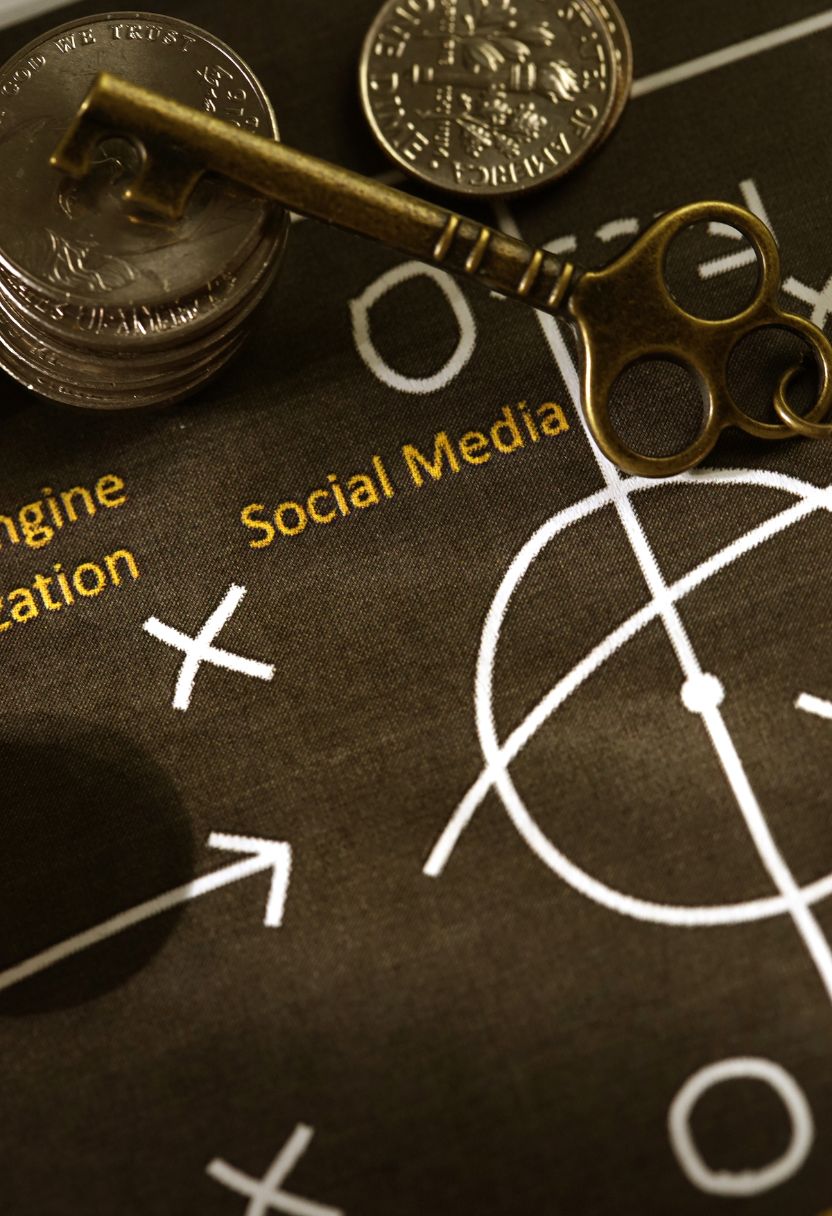

Infographics, huh? They're kind of a big deal in social media management these days. So, what are they exactly? Well, infographics are visual representations of information or data. They combine graphics and text to make complex stuff easier to understand. Imagine trying to explain climate change with just words – it ain't easy! But with an infographic, you can convey the same info quickly and effectively.
Now, let's talk about why they're important for social media management. First off, people don't have time to read long articles anymore. Get the scoop check now. Everyone's scrolling through their feeds at lightning speed. If you can't grab their attention within seconds, you're pretty much outta luck. Infographics do just that – they catch the eye and deliver key points fast.
Moreover, infographics aren't just eye candy; they're also memorable. check out . Studies have shown that humans remember 80% of what they see but only 20% of what they read. So if your brand's message is wrapped up in a cool graphic, it's more likely to stick in people's minds.
Another thing is shareability. People love sharing visually appealing content on social media. A well-designed infographic can go viral faster than a plain old blog post ever could. This means more exposure for your brand without spending tons on ads.
However (and this is crucial), not all infographics hit the mark. A cluttered or confusing design can do more harm than good. It's got to be clear and concise – no one wants to squint at their screen trying to figure out what the heck you're talking about.
One might think creating infographics takes a lot of effort and resources – well yeah, it does require some skill and creativity but there's plenty of tools out there that make it easier than you'd expect.
So don't underestimate the power of infographics in your social media strategy! They're not just pretty pictures; they're powerful tools for communication and engagement too!
In conclusion – oh wait did I say conclusion? Let's wrap this up by saying: Infographics simplify complex ideas, capture attention quickly, boost memory retention and increase shareability on social media platforms like nobody's business!
Infographics have become a staple in social media, haven't they? They're not just colorful pictures with words; they're powerful tools that transform complex data into digestible, engaging visuals. I mean, who doesn't love a good infographic, right? But let's dive into the different types of infographics used in social media and why they matter.
First off, there's statistical infographics. These are like the rockstars of the infographic world. They present cold-hard numbers but make them look appealing. Instead of drowning users in spreadsheets or lengthy reports, you get pie charts, bar graphs, and percentages neatly packaged. It's no wonder businesses use these to showcase growth statistics or survey results on platforms like LinkedIn or Twitter.
Then we've got timeline infographics. Oh boy, these are lifesavers when it comes to presenting historical data or project milestones! Imagine trying to explain the evolution of smartphones over two decades with just text-yawn! A timeline infographic can lay all that out visually from one year to another without putting your audience to sleep.
Comparison infographics are also quite nifty. Ever been stuck deciding between two products? Comparison infographics come to rescue by laying out features side-by-side so you can make an informed decision quickly. Businesses often use this type to highlight how their product stands against competitors', especially on Instagram where visual content reigns supreme.
Process infographics show you step-by-step how something works or how to do something-like a recipe for success (literally and figuratively). These are super popular on Pinterest where DIY enthusiasts and hobbyists seek easy-to-follow guides for their next project.
And let's not forget about informational infographics which primarily focus on educating the audience about a specific topic without necessarily using too many stats or processes. Think health tips during flu season shared by healthcare providers on Facebook; it's concise yet informative.
Lastly we have geographic infographics which use maps as a base layer for the information being presented. They're particularly useful for displaying regional data like election results or market demographics. Twitter is full of these around major events because they easily convey lots of info at a glance.
But hey, don't think every infographic will automatically go viral just because it looks pretty! You've got to consider your audience's preferences and needs too. After all, what good is an amazing design if nobody gets anything useful from it?
In conclusion (not that we're wrapping up abruptly), different types of infographics serve different purposes on social media depending on what message you're trying to convey and who you're trying to reach. So next time you see one scroll by in your feed remember-it took some thought and creativity behind those aesthetically pleasing visuals!
So yeah, that's my take on types of infographics used in social media-hope it wasn't too boring!
Twitter, known for its microblogging feature, was initially called "twttr" before obtaining its present name, reflecting its focus on concise, real-time updates.
Snapchat presented the principle of tales and self-destructing messages, substantially affecting exactly how more youthful target markets communicate and share content online.
Pinterest, which started in 2010, changed on-line buying and idea sharing with its pinboard-style style, ending up being a go-to platform for do it yourself, fashion, and dish ideas.
The average individual invests concerning 145 mins daily on social media, which shows its combination right into daily life and its function in communication, enjoyment, and details dissemination.
When it comes to boostin' your social media engagement, one strategy that often gets overlooked is scheduling posts for optimal times.. Now, you might think this sounds too simple or even trivial, but trust me, it's not.

Posted by on 2024-07-14
Creating effective infographics can be quite a task, but with the right tools and software, it becomes a lot easier. But before we dive into the specifics, let's acknowledge that not everyone is a designer or has an eye for aesthetics. However, there's no need to worry! There are plenty of user-friendly tools out there that don't require you to be a professional.
First off, let's talk about Canva. It's probably one of the most popular options out there. Why? Well, it's incredibly intuitive and offers a plethora of templates that can suit any topic you're working on. You don't have to start from scratch at all; just pick a template and customize it as much or as little as you want. It's like magic!
Another great tool is Piktochart. Now, this one's specifically designed for creating infographics. What's cool about Piktochart is its drag-and-drop interface which makes it super easy to use even if you're not tech-savvy (and who isn't these days?). Plus, it offers icons and images that are ready-to-use-no searching needed.
If you're looking for something more advanced yet still approachable, give Adobe Spark a try. Sure, Adobe's suite can seem intimidating with Photoshop and Illustrator being so complex. But Spark isn't like them at all; it simplifies things while still giving you powerful options to create visually striking infographics.
For those who aren't fans of overly flashy designs and prefer data-driven visuals instead, Infogram might be your go-to tool. It specializes in integrating charts and graphs seamlessly into your infographic projects without making them look boring.
One shouldn't forget Microsoft PowerPoint either! Yes, I know what you're thinking: "PowerPoint? Really?" Believe it or not, but PowerPoint has evolved over time and now includes features that make designing custom infographics pretty straightforward.
Lastly-though certainly not least-is Venngage. This tool combines ease-of-use with depth by offering detailed customization options without overwhelming beginners. And their customer support? Top-notch!
In conclusion (if I must wrap up), creating effective infographics doesn't require years of design school anymore thanks to these amazing tools available today! Whether you choose Canva for its simplicity or Infogram for its data focus-or any other mentioned above-you'll find something perfect for your needs without breaking too much sweat over it.

Infographics have become an essential tool for communication in our visually-driven world. They're not just a pretty picture; they convey complex information in an accessible and engaging manner. But, designing infographics that truly engage your audience isn't as simple as slapping some icons onto a colorful background. There are best practices to follow if you want your infographics to stand out and be effective.
First things first, don't overload your infographic with too much info. Less is more, really! If you cram it full of text and data, people will get overwhelmed and skip right past it. Instead, focus on the key points you want to convey. Remember, the whole idea is to simplify information, not complicate it further.
Another important aspect is visual hierarchy. What's that, you ask? Well, it's basically organizing elements so that the most important stuff catches the eye first. Use larger fonts for headings and bold colors to draw attention where needed. You wouldn't want folks missing out on critical details because everything looks equally important.
Now, let's talk about color schemes – oh boy! This can make or break your infographic design. Don't go crazy with too many colors; choose a palette that complements each other instead of clashing horribly. Stick to 2-3 primary colors and use shades of these for variety without causing chaos on the screen.
It's also crucial not to forget about readability. Fancy fonts might look cool but they could be hard to read – especially when scaled down for web use or mobile screens. Stick with clean, legible fonts so nobody has trouble understanding your content at a glance.
Interactivity can play a big role too if you're sharing digital infographics online (which let's face it-is what most of us do nowadays). Adding interactive elements like clickable areas or animated graphs can make your infographic more engaging and fun to explore.
And hey, while we're at it-don't neglect mobile optimization! With so many people accessing content via their phones these days, making sure your infographic looks good on smaller screens is non-negotiable!
Lastly-and this may seem obvious-proofread everything! Spelling errors or incorrect data can ruin credibility instantly! Double check facts before publishing because once it's out there-it's out there!
In conclusion, creating an engaging infographic involves balancing aesthetics with clarity while keeping user experience top-of-mind throughout the process.. Yes,,it might sound like alot but following these best practices ensures yours will not only attract attention but also effectively communicate its intended message., So go ahead-get designing!,
Infographics have become a popular tool in social media campaigns, and for good reason. They ain't just pretty pictures; they're powerful ways to convey information quickly and effectively. Let's dive into some case studies that highlight the successful use of infographics in social media campaigns.
First up is the "Save the Earth" campaign by an environmental organization. They wanted to raise awareness about deforestation, but they didn't want to bore people with long texts or complex charts. So what did they do? They used infographics! One particular infographic showed a tree with sections labeled to represent various statistics about deforestation, like how many trees are cut down per minute. It was eye-catching and easy to understand. The result? Their post went viral, reaching millions of people who might've otherwise scrolled past.
Another great example comes from a health awareness campaign on Instagram. A nonprofit aimed at educating young adults about mental health issues decided to use infographics as part of their strategy. Instead of posting dense paragraphs about symptoms and treatments, they created colorful graphics that summarized key points in bite-sized chunks. These posts not only got lotsa likes but also sparked meaningful conversations among followers who felt comfortable sharing their own experiences.
And let's not forget businesses! A tech startup launched a new product and wanted to explain its features without overwhelming potential customers with technical jargon. They turned to infographics for help. By breaking down each feature into simple visuals accompanied by short descriptions, they managed to make even the most complicated aspects seem approachable. Sales skyrocketed after their campaign kicked off, proving that well-designed infographics can make all the difference.
But hey, it's not all sunshine and rainbows-sometimes things don't work out as planned (surprise!). One company tried using infographics for a fashion line promotion but ended up confusing their audience instead. The designs were too cluttered and failed to communicate essential details clearly. This serves as a reminder that while infographics can be incredibly effective, you gotta get it right!
So yeah, when done right, infographics can significantly boost engagement in social media campaigns by making information more accessible and engaging. But ya gotta remember: less is often more! Use clear visuals, concise text, and always keep your audience in mind.
In conclusion (not trying to sound too formal here), these case studies show that whether you're raising awareness or promoting products, infographics can be your best friend-or your worst enemy if misused! Just focus on clarity and simplicity, then watch your message spread like wildfire across social media platforms.

When we delve into measuring the impact of infographics on audience engagement, it's impossible not to notice how these visual tools have changed the way we consume information. Infographics ain't just pretty pictures; they serve a purpose that goes beyond mere aesthetics. They can make complex data more digestible and engaging, something that plain text often fails at doing.
You see, in our fast-paced world, people don't have time to sift through pages of data or long-winded reports. They're looking for quick hits of information that are easy to understand and remember. Infographics fit this need perfectly by combining visuals with concise text. But do they really boost audience engagement? Well, let's take a closer look.
First off, it's essential to recognize that not all infographics are created equal. A poorly designed one can be confusing rather than enlightening. However, when done right, an infographic can grab your attention almost immediately and keep you engaged longer than a block of text would. It's like comparing apples and oranges-both are fruits but entirely different experiences.
Interestingly enough, studies show that people who follow directions with illustrations do 323% better than those who follow directions without illustrations. That's not nothing! This statistic alone underscores the power of visual aids in enhancing comprehension and retention.
Engagement isn't limited to just understanding the content either; it extends to sharing it too. People are more likely to share visually appealing content on social media platforms-it's as if they're compelled by some unseen force! Ain't nobody gonna share something boring or hard-to-follow with their friends and followers.
Now, let's talk about negation here: If infographics weren't effective at boosting engagement, companies wouldn't invest so much in creating them. You won't find major brands churning out detailed reports when they know their audience prefers streamlined visuals.
However-and here's where things get tricky-not every piece of data is suitable for an infographic format. Some info is just too nuanced or complex for a simple image-and-text combo to convey effectively. So there's got to be a balance between what needs detail and what benefits from being simplified.
Oh! And let's not forget about emotional appeal! An infographic crafted with eye-catching colors and compelling imagery can evoke emotions much faster than lines of text ever could. This emotional connection plays a significant role in keeping audiences hooked.
So while it's clear that infographics have had an undeniable impact on audience engagement, it's equally important to acknowledge their limitations. They're not a one-size-fits-all solution but rather an addition to the toolkit for effective communication.
In summary (and trust me I'm trying not to repeat myself), infographics work wonders when appropriately used-they simplify complex information, increase retention rates, encourage sharing on social media platforms, and create emotional connections with audiences quickly. But always remember: even the best tool can't fix everything if misused!
Infographics have become a popular tool for sharing information on social media. They're visually appealing, easy to digest, and can communicate complex ideas quickly. However, there are some common mistakes that people make when using infographics on social media that can really hinder their effectiveness.
First off, one mistake you definitely don't want to make is overcrowding your infographic with too much information. Oh boy! It's tempting to include every single detail but trust me, this will only overwhelm your audience. Keep it simple and focused on the key points. Your followers ain't got time to sift through a cluttered mess.
Another thing you should avoid is poor design quality. Low-resolution images or mismatched colors can make your infographic look unprofessional. You don't need to be a graphic designer to create an effective infographic, but putting in that extra effort into making it look good goes a long way.
People also tend to forget about mobile users when designing infographics. If your text is too small or if the design doesn't adapt well to smaller screens, you're probably going to lose a significant portion of your audience right there. Make sure it's legible and looks great even on smartphones and tablets.
Neglecting data accuracy is another big no-no! Don't ever compromise on the credibility of the information you're presenting just because you want it to look snazzy. Double-check all facts and figures before hitting that “post” button.
Let's not ignore engagement either! Simply posting an infographic isn't enough; interact with your audience by responding to comments or questions about it. Engagement boosts visibility and helps build community around your content.
Lastly, don't forget about branding elements like logos or brand colors in your infographics - it's crucial for maintaining consistency across all platforms you're active on.
So there you have it! Avoid these pitfalls: overloading info, poor design quality, ignoring mobile users, neglecting data accuracy and forgetting engagement and branding elements. Follow these tips and you'll be well on your way to creating killer infographics that'll captivate your social media audience!
